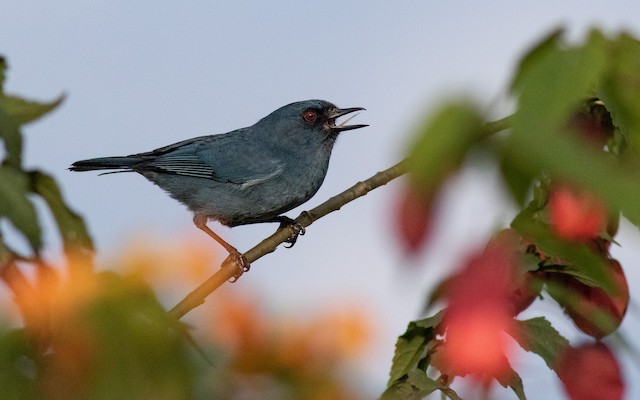With its glossy deep blue plumage, black mask and bright red eyes, this chubby bird is not one to be missed!

Part of the tanager family, this birds coat is not as vibrant as its cousins, but this helps it blend into its surroundings.

The masked flowerpiercer gets its name from the piercing hook it has on the tip of its bill which is used to cut open flowers to get the nectar.

The female of this species looks slightly duller than the male, and the youngsters’ plumage is even duller, with dark grey underparts.

You can find these birds in the humid forests and scrubs of South America.

Their breeding season is usually from June to September although this may differ by a few months in Colombia and Venezuela.

The female builds a cup-shaped nest out of moss and grass, usually placed in a bush, after finding a mate.

Once she lays her eggs, she incubates alone, and both she and the male feed the babies once they are born until adulthood.

Their diet largely consists of nectar and small fruit, although they do also eat seeds and insects if they are readily available.

This bird is usually seen in mixed-species flocks around abundant sources of food with various other tanagers, other flowerpiercers and hummingbirds.












